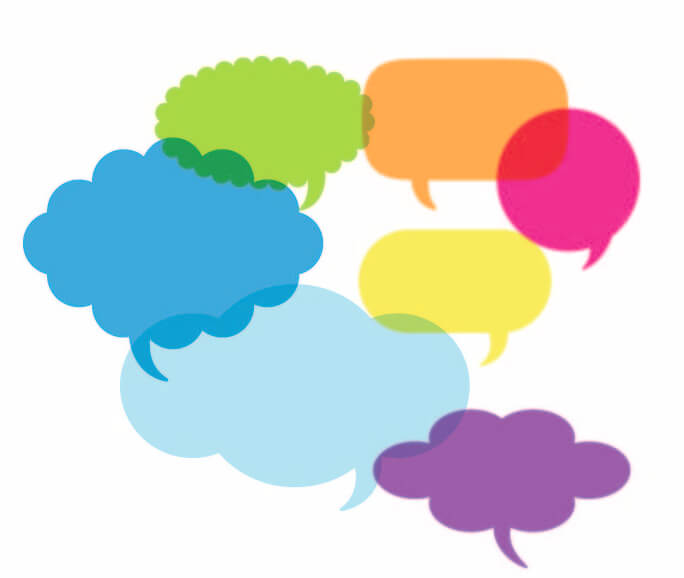In-person communication may be key to getting in the door
There is so much excitement in being admitted to a dream college or getting the ideal job; however, this is just the initial step to begin building networking opportunities. Having an effective communication style makes a memorable first impression and builds an ongoing relationship.
Students are always meeting with teachers, and workers are constantly interacting with colleagues. Mixing-and-matching communication options is a balancing act that includes in-person conversations, email updates and social media posts.
 During the past two years of communicating by Zoom for school and work, many people have forgotten the impact of face-to-face conversations. The Wall Street Journal recently published “The People Who Apply for Jobs by Showing Up,” examining a trend toward in-person interviews replacing online screening.
During the past two years of communicating by Zoom for school and work, many people have forgotten the impact of face-to-face conversations. The Wall Street Journal recently published “The People Who Apply for Jobs by Showing Up,” examining a trend toward in-person interviews replacing online screening.
The article emphasizes, “Human connection. A foot in the door, a shake of the hand” as strategies to get noticed. Meeting with a professor or talking with a supervisor can form a relationship with immediate and long-term benefits.
In-person conversations could identify soft skills of personal characteristics like eye contact, body language and note taking. Being an active listener and maintaining an engaging discussion helps the meeting evolve beyond the basic question-and-answer exchange.
To introduce yourself, prepare an icebreaker, which is a memorable point about yourself and relevant to the person you are having a conversation with. Also known as an elevator pitch, the purpose is to talk concisely about an idea that relates to the purpose for the meeting.
For example, if you are meeting with someone interested in the environment, a conversation could begin: “I’ve experienced how climate change impacts the ski season in my state of Vermont.”
This statement helps the teacher or boss form a distinctive impression and kicks off the conversation as a collaborative dialogue.
Scheduling a face-to-face meeting or telephone call could help in getting to know your professors or colleagues outside of the usual setting. Typically, at the end of class, teachers ask students if they have any questions and encourage them to stop by during office hours.
In starting the conversation, be sure to bring materials that reference your work effort. This shows an effort to solve the problem and research information. For example, if there is a roadblock on how to respond to a homework question or work assignment, bring books or newspaper articles relating to the subject. Prepare a list of questions to answer. Being organized helps to guide a productive conversation and highlight your commitment to succeed.
Remember to keep in touch with email updates or handwritten notes to professors and bosses, even after completing the class or leaving the firm. Ongoing communications can enhance valuable references for future opportunities. Recommendations typically emphasize interpersonal skills like leadership and teamwork. Ongoing communication fosters stronger social relationships.
An example of a short note can read: Dear Professor, I hope your classes are going well. Since I graduated, I have been working at (name of company), where I am responsible for (list specific tasks). Your class projects (elaborate) prepared me for my job. I will keep in touch with updates. Thanks again for influencing my future. Sincerely, (Happy Student).
In addition, email exchanges with supervisors and professors could be an efficient way to communicate. This allows a more immediate back-and-forth conversation to respond to a group email discussion or clarify an assignment.
To start an email, the greeting should professionally address the boss or teacher, similar to how they present themselves at work or in class. For example, if they are known by their first name, then start the note with their name. It is inappropriate to begin a more formal email with “Hey” before their name or use texting shorthand style like “u” instead of “you.” This slang could be misinterpreted as being disrespectful.
Social media is also a popular part of everyday interactions to share updates and information. Be mindful that your photos and comments on Twitter, Instagram and Facebook help to create your personal brand. Remember that postings are usually available for everyone to see and form opinions.
Communicating directly with people and through technology is not mutually exclusive. Email a professor, boss or colleague to schedule a coffee break. Afterwards, text a thank-you note.
Natural conversations can develop relationships outside of the classroom or work environment. Be sure to add an actual smile that is not fully captured in an emoji.
(Margo Bartsch founded College Essay Coach, a full-service college admission business, and has been an adjunct professor in business at Champlain College and at Middlebury College.)

